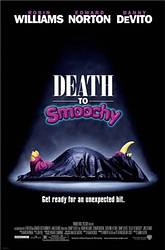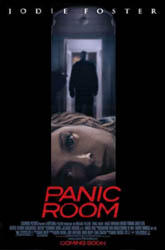 Director: Starring:
OTHER REVIEWS: 15 Minutes Lucky
Numbers Rock
Star What's
the Worst That Could Happen? |
Death to Smoochy BY: DAVID PERRY Adam Resnick's screenplay to Death to Smoochy yearns desperately to seem like a lost script from Paddy Chayefsky but instead comes off like something from Patty Duke. Oh, there's wit to spare in this far-from-innocuous satire, but it is so lucid and winsome that the audience feels mistreated by its pile driver storytelling. Danny De Vito, the virtuoso actor-come-director, likes darker comedies and, though terribly inept, Death to Smoochy is dark. But without any real meat on the bones, the film delivers only a few puttering giggles in its turgid attempt to seem more ironic than it actually is. Taking aim on the children's television business, Death to Smoochy begins with enough garishness to make Bob Fosse blush. The opening introduces the television series of Rainbow Randolph (Williams), a creepy host who sings "friends come in all sizes" as well as the fact that Rainbow Randolph merchandise comes in all sizes too. His world seems as bright as Pee Wee Herman and his playhouse, with small children swarming around his throne on all of children's television, is complete with midgets. But all comes crumbling down after the FBI catch him accepting bribes to allow certain children on the air, which convinces Kidnet, the channel he works for, that it's time to pull the plug on Rainbow Randolph. Kidnet vice president of development Nora Wells (Keener) goes on a search for a new star of kiddie television who will be inoffensive enough to never get the network in the same pickle as the Rainbow Randolph problem. Wells' search leads her to Sheldon Mopes (Norton), who has turned his rhinoceros character Smoochy into a regular entertainer at the Coney Island free methadone clinic. Wells couldn't care less about the wants and needs of Mopes, who struggles to make sure that everything in the show has an honest moral and calls for healthy living, her only concern is whether or not he can make her money. And indeed he does -- fickle children happily buy into the Smoochy show, throwing Rainbow Randolph to the side. This only further infuriates Randolph, who becomes intent on killing his replacement in hopes returning to his old timeslot. In the midst of all this, Resnick throws in a corrupt talent agent (De Vito), a corrupt network president (Stewart), a corrupt Irish restaurateur (Ferris), a corrupt charity leader (Fierstein), and a corrupted former children's show host (Schiavelli). So many character vying for not only Mopes' attention, but also the audience's becomes taxing in the film's 109 minutes. Only Ferris, whose restaurant is a cover for her mob rallies, delivers a memorable performance. De Vito has done this shtick before with 1984's The Ratings Game and with more success. Like that film and Throw Mama from the Train, De Vito's resolve to relegate as much screen time to the lingering destitution of his characters makes Death to Smoochy a rather uncomfortable film to watch at times. This is not a terribly offensive work -- which it would not mind being -- but instead one that never really serves any true purpose and wastes the time of everyone involved. I liked his two dramatic directorial films, Hoffa and The War of the Roses, but De Vito's satirical comedian shows little teeth when he's mainly going for laughs. Even the songs, which are meant to be funny because of their absurdity, pale in comparison to "Floop's Song" from Spy Kids, of all things. Probably the biggest problems other than the script lie in
the actors, almost all of whom are highly talented but really fail to show anything other
than clichés. A rabid Williams and a subdued Norton turn the two into contradictory
action figures, leaving only Keener standing with some semblance of respectability out of
the main cast. Even De Vito as an actor, who should know he can go further, seems to be
pulling his punches. Yeah, these are all action figures, but even the pompous sales pitch
by Rainbow Randolph couldn't convince the audience that Death to Smoochy is more
than a dull parody. |



